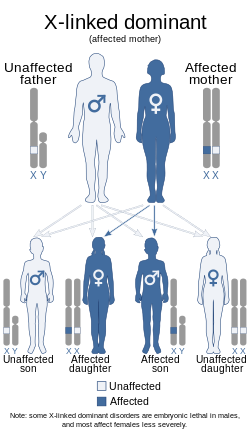This article may be confusing or unclear to readers.(January 2020) |
| Focal dermal hypoplasia | |
|---|---|
| Other names | Goltz syndrome |
 | |
| This condition is inherited in an X-linked dominant manner. | |
| Specialty | Medical genetics |
Focal dermal hypoplasia is a form of ectodermal dysplasia. [1] It is a multisystem disorder characterized primarily by skin manifestations to the atrophic and hypoplastic areas of skin which are present at birth. These defects manifest as yellow-pink bumps on the skin and pigmentation changes. [2] The disorder is also associated with shortness of stature and some evidence suggests that it can cause epilepsy. [3]
